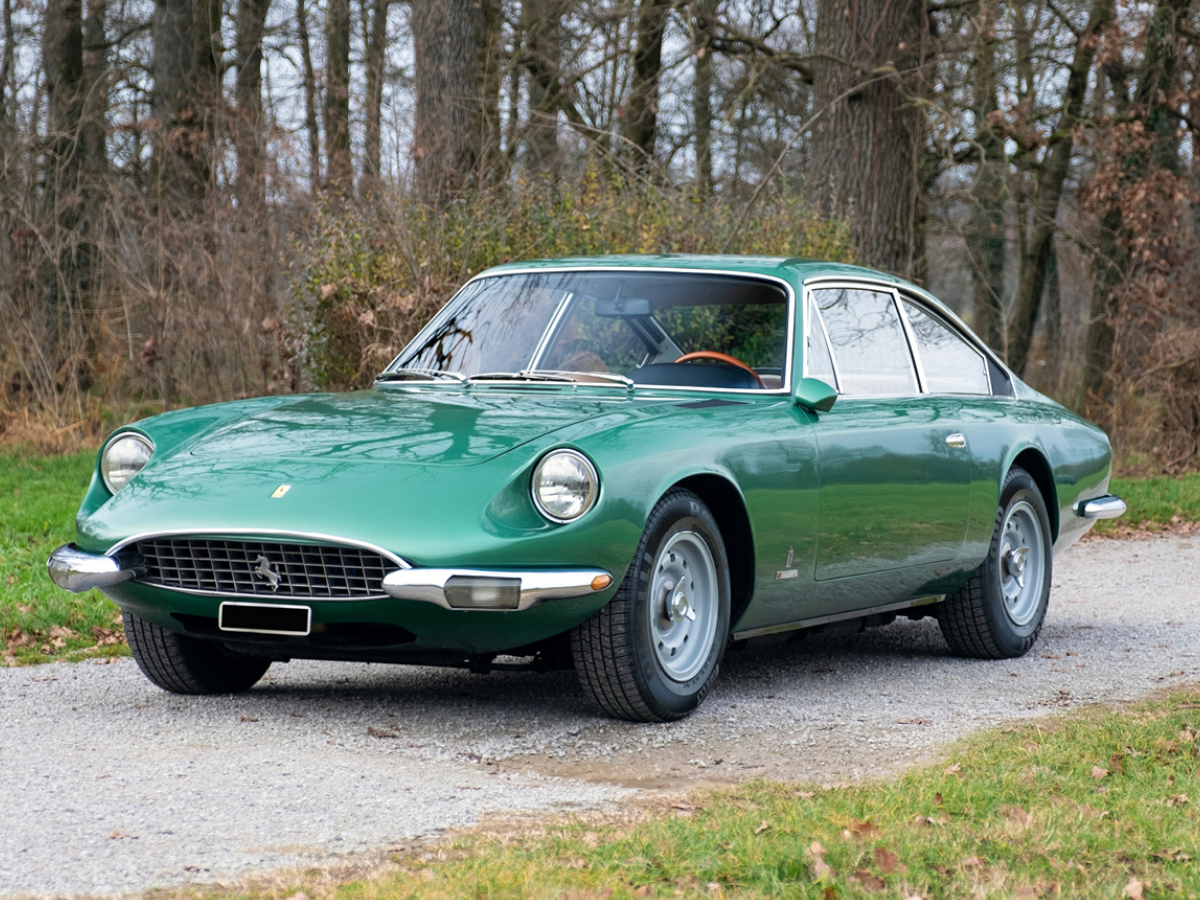The “Queen Mother of Ferraris”
It seems hard to imagine automotive media today referring to an exotic GT coupe as “Queen Mother.” It might be even harder to imagine owners and enthusiasts embracing such a nickname for a premium 12-cylinder road car. That happened in 1969, though, when Road & Track magazine bestowed the Ferrari 365 GT 2+2 with that very title. It has stuck since. Go ahead, Google “Queen Mother of Ferraris.” We’ll wait.
Ferrari introduced the 365 GT 2+2 in 1967 to replace the 330 GT 2+2, and the new car brought much more than a larger-displacement V-12 engine to the table. Ferrari made 800 of these “big” models over four years, which made it the automaker’s top seller over that period. RM Sotheby’s is offering a 1969 Ferrari 365 GT 2+2 at its Miami 2024 auction March 1-2. The auction is part of the new four-day ModaMiami event. The car is believed one of 29 made in the Verde Bahram color, which to some eyes might recall a PGA Masters Green jacket. The pre-sale estimate for this green machine is $225K-$275K.
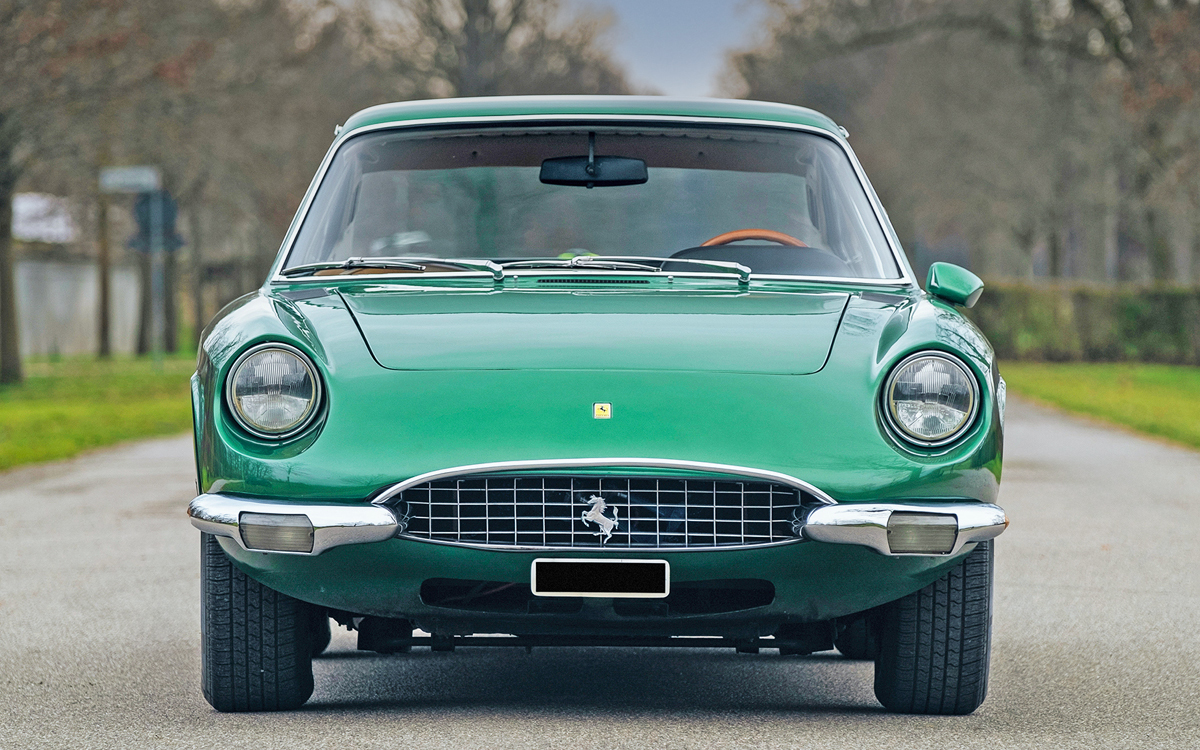
Family Ferrari
Enzo Ferrari is said to have expressed a preference for his company’s 2+2 models, as they allowed the owner to share the fun with family. The first was the 1960 250 GT 2+2, also called a GTE. About 1,000 were made through fall 1963. The 330 GT 2+2 replaced it for 1964 on a slightly longer chassis and with the larger 4.0-liter engine that would also go into the 1966 330 GTC and GTS models. Ferrari made 1,080 through 1967, when the new, larger 365 GT 2+2 arrived.
Though sharing the departed 330 GT 2+2’s 104.3-inch wheelbase, the 365 GT 2+2 had a revised chassis and became the first of these larger Ferraris to feature independent rear suspension. The 365 GT 2+2 was a bigger car overall, stretching 196 inches bumper-to-bumper, 5.5 more than the previous model. For context, this Ferrari was just over a foot longer than a 1967-1968 Ford Mustang and just four inches shy of a midsize Chevrolet Chevelle.
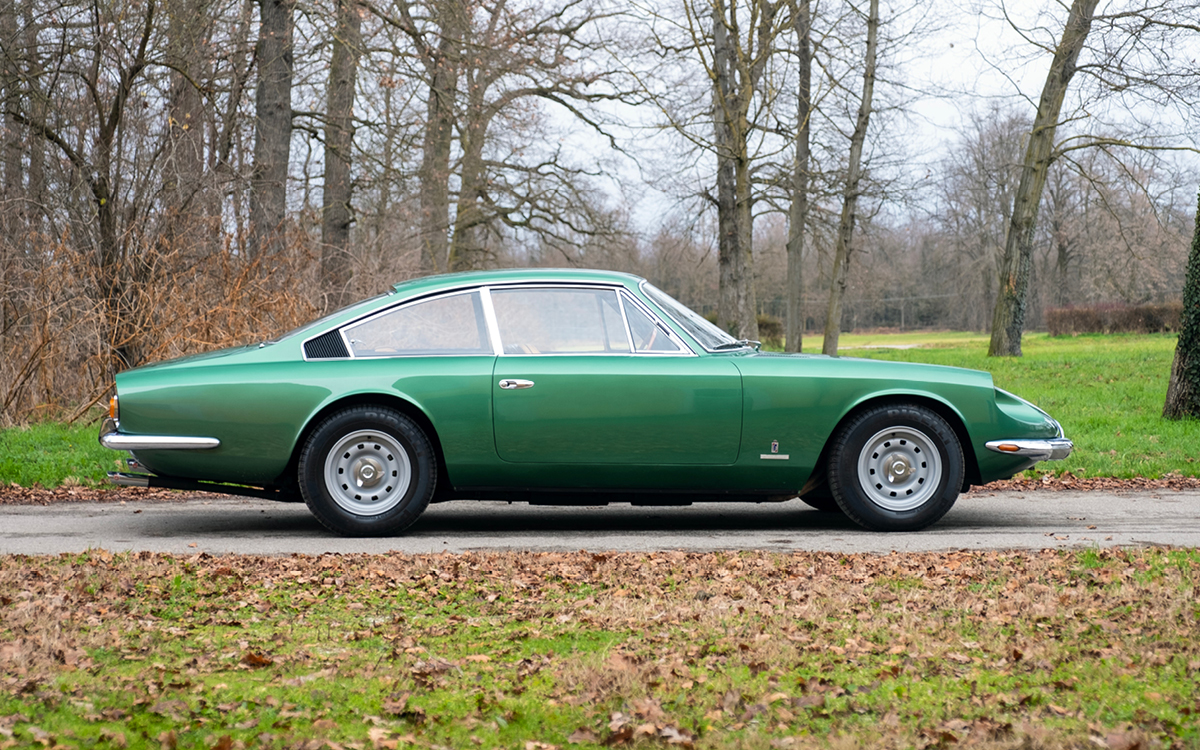
Smooth Lines, Smooth Moves
The Ferrari 365 GT 2+2 represented a significant evolution of the “family” Ferrari at the time. Ferrari partner Pininfarina designed and built the bodies and interiors. The 365 GT 2+2 essentially adopted the design of the 330 Speciale that Pininfarina had custom-designed and built for Belgium’s Princess Lilian de Rethy. That car became a series of four, with one of the other buyers being renowned cardiovascular surgeon, Dr. Michael DeBakey. That “royal” Ferrari also heavily influenced Pininfarina’s very rare 365 California in 1966 (just 14 made).
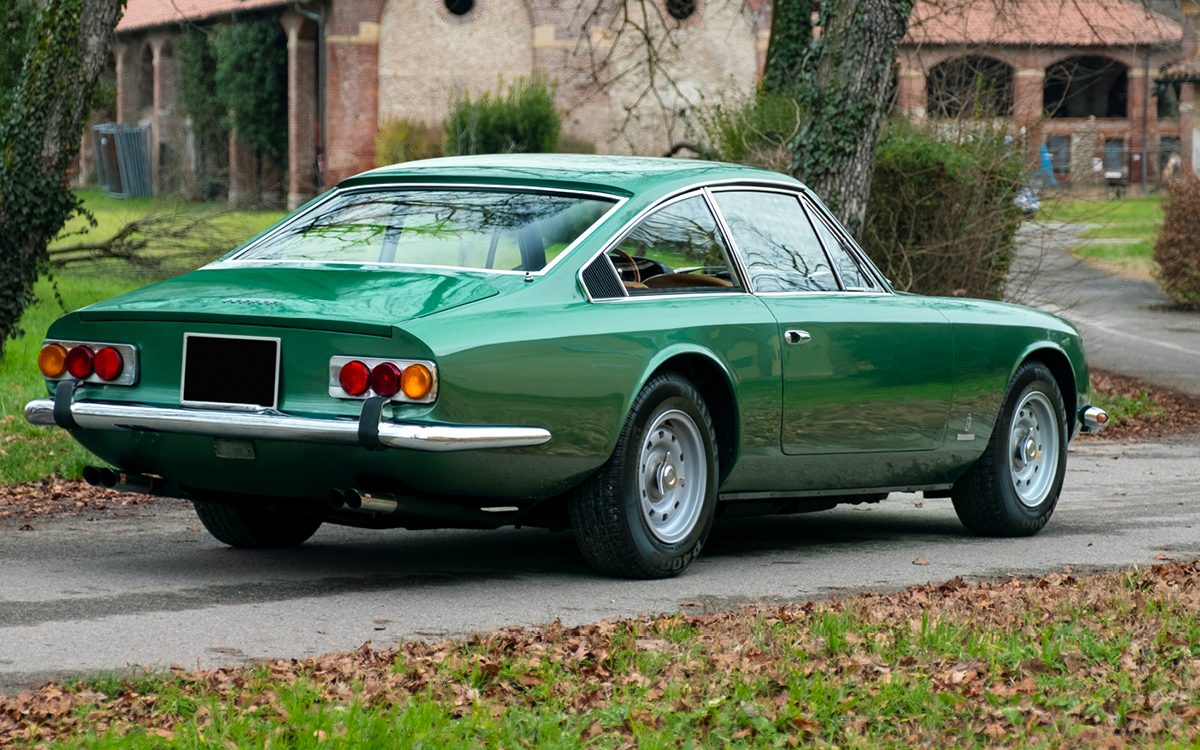
Luxury That Americans Could Love
Standard equipment included power brakes, power steering, and Ferrari’s first self-leveling rear suspension, which used a system from Koni. The idea was that the system would keep the rear from sagging under the added weight of luggage in the sizeable trunk.
Inside, the 365 GT 2+2 was Ferrari’s most luxurious model to date, with standard plush Connolly leather seats, electric power windows, and a stereo. Air conditioning was standard for the U.S. market and optional elsewhere. The rear seats were tight but usable for adults over short distances. The wood veneer-trimmed dash gave a rich look, while a pleated white headliner seemed a somewhat odd design choice.
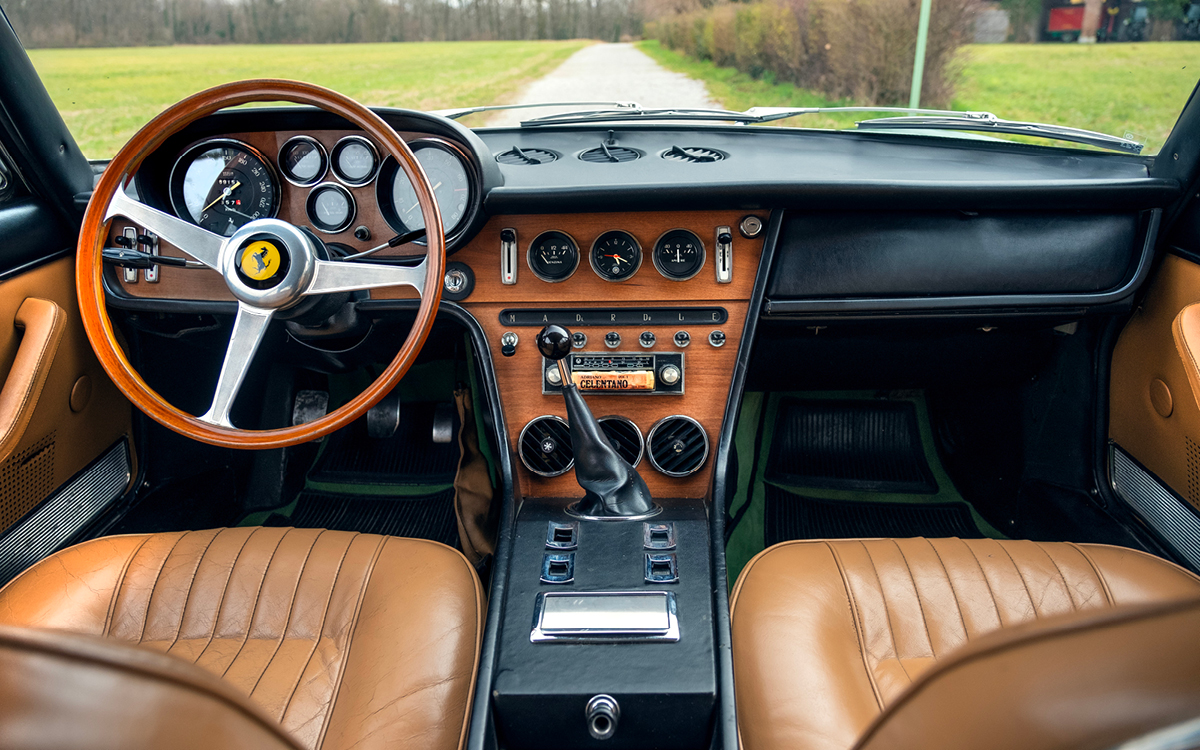
Speed Queen
Like the rare 365 California, the 365 GT 2+2 used the 4.4-liter version of the Colombo V-12 fed with three twin-choke Weber carburetors and rated at 320 horsepower. This engine would then go into the 365 GTC and 365 GTS and, in six-carburetor form, the 365 GTB/4 Daytona.
While the 1967-1970 Ferrari 365 GT 2+2 offered the luxuries American customers demanded, there was still just one transmission offered – the five-speed manual. (The Ferrari 400i 2+2 would offer an automatic in the late 1970s.) The car’s stellar performance, along with highly refined road manners and luxury, spurred Road & Track to praise the big Ferrari in its 1969 road test:
“The 365 GT 2+2 is to automobiles what Abe Lincoln was to men – that is to say, great. It will do almost anything an automobile would be asked to do: cruise at 150 mph, creep along in traffic, carry the wife and kids shopping or on a cross-country trip, all in air-conditioned comfort.”
The magazine then crowned the 365 GT 2+2 “The Queen Mother of Ferraris.”
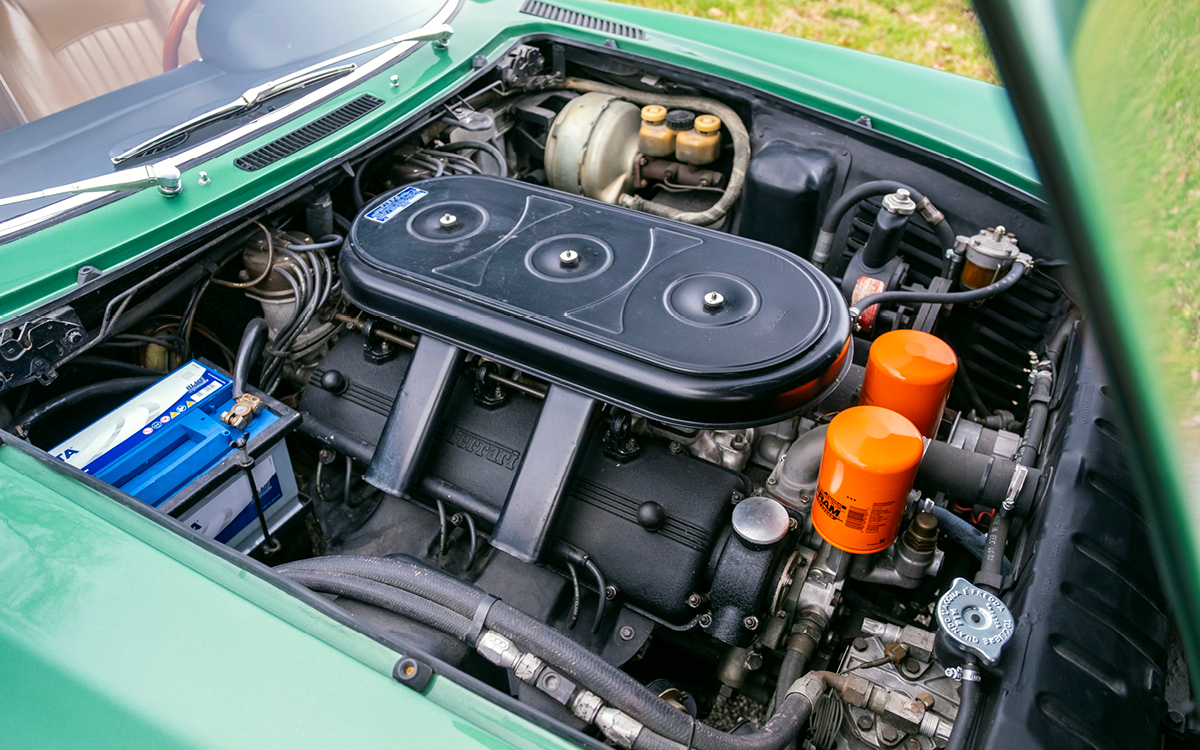
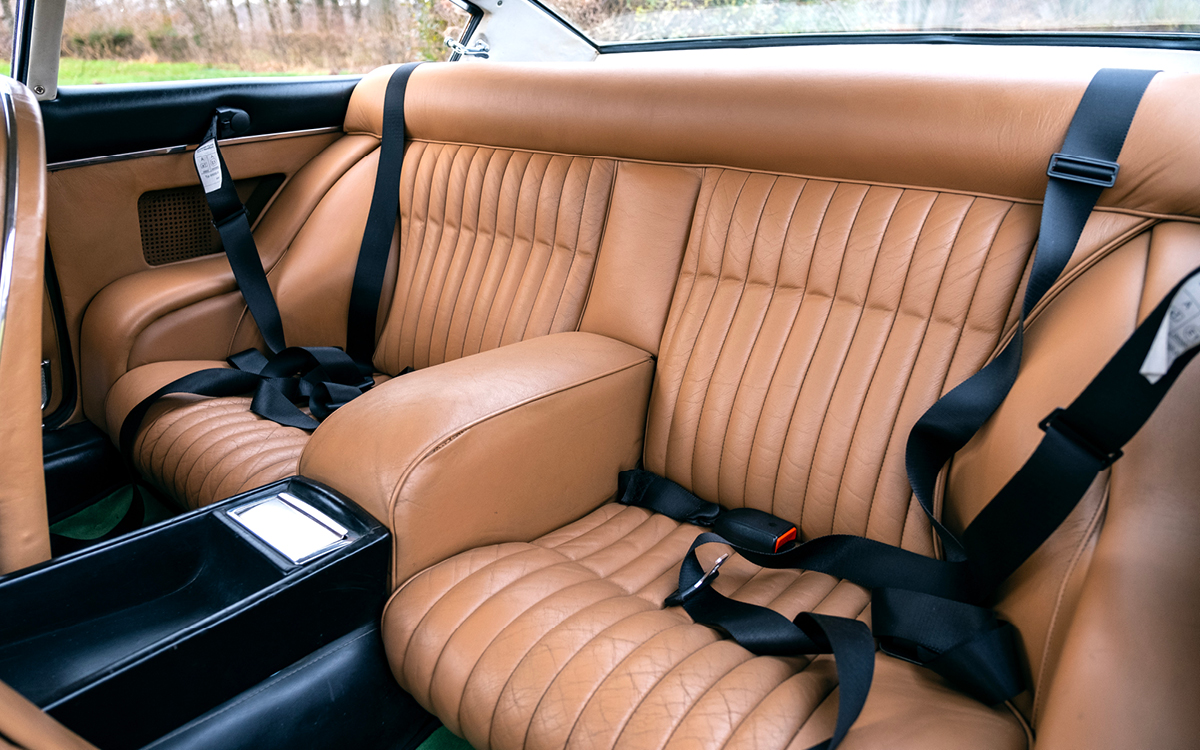
Green With Envy Yet?
The Ferrari 365 GT 2+2 offered by RM Sotheby’s has been owned by American entrepreneur, restaurateur, and television personality Joseph Bastianich since 2010. The car was featured on Top Gear Italia and included in the “Driving with the Stars” exhibition at the Enzo Ferrari Museum in Modena and the “Driven by Enzo” exhibition at the Ferrari Museum in Maranello.
The “Queen Mother” was quite a grand lady, indeed.


